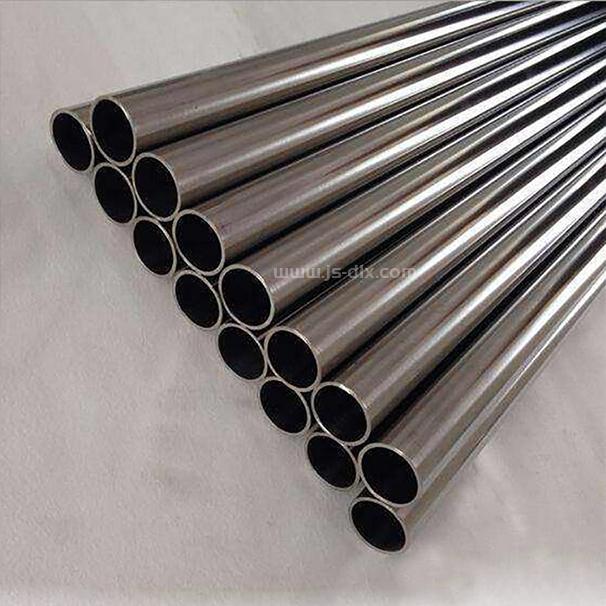Welcome to Changzhou DLX Alloy Co., Ltd.
Over 22 years of R&D and manufacturing experience
Product quality is guaranteed After-sales 7×24 hours service
Welcome to Changzhou DLX Alloy Co., Ltd.
Over 22 years of R&D and manufacturing experience
Product quality is guaranteed After-sales 7×24 hours service
 8619906119641
8619906119641 Whatsapp:+86 199 0611 9641
Email:sales8@dlx-alloy.com
Add:NO.32 West Taihu Road, Xinbei District, Changzhou, Jiangsu,China
Release time:2025-04-03 click here:173
Hastelloy is a nickel-based alloy with very outstanding corrosion and high temperature resistance. It consists of high levels of nickel, molybdenum and chromium, and is able to maintain its strength and oxidation resistance in extreme environments. Hastelloy is particularly well known for its corrosion resistance to many chemical media, including strong acids and bases, as well as oxidizing and reducing environments. As a result, it is widely used in a variety of industries, particularly in the chemical, aerospace, marine engineering and energy sectors.

Material Characteristics:
Extreme corrosion resistance: the main advantage of Hastelloy is its excellent corrosion resistance, especially at high temperatures and in corrosive media. Different types of Hastelloy show different advantages for specific corrosive media. For example, the C-series Hastelloys (e.g. Hastelloy C-276, C-22) excel in resistance to pitting and crevice corrosion as well as stress corrosion cracking. This allows it to maintain good performance when exposed to strong acid media such as hydrochloric, sulfuric and phosphoric acids.
High temperature stability: Hastelloy retains its mechanical strength at high temperatures. Its melting point is usually around 1300°C, so it can withstand extreme temperatures and pressures. This high-temperature stability gives it potential for use in heat-treating equipment and in high-temperature operating equipment such as nuclear reactors.
Good weldability: Hastelloy has good machinability and weldability, and is easy to form, weld and adapt to complex fabrication processes in use. This makes it very advantageous in applications where stringent weld quality is required.
Resistance to oxidation and chloride corrosion: The chromium content of Hastelloy provides significant resistance to oxidation, but it is also very resistant to chloride-induced corrosion, making it particularly good in marine environments or chlorinated processes.
Applications within the industry:
Chemical industry: Due to its excellent corrosion resistance, Hastelloy is widely used in chemical equipment such as reactors, heat exchangers, evaporators, pumps and valves. Especially in the process of handling strong acids, chlorine, phosphoric acid and chlorides, Hastelloy can significantly reduce the corrosion loss of equipment, improve productivity and extend the service life of equipment.
Aerospace industry: In the aerospace field, Hastelloy is used to manufacture gas turbines, high-temperature components of jet engines, exhaust systems and combustion chambers. Its high-temperature strength and corrosion resistance allow it to excel in demanding flight environments.
Marine Engineering: Due to its resistance to chloride corrosion, Hastelloy is commonly used in marine engineering for oil and gas extraction equipment, desalination equipment, ship propulsion systems and submarine structures. These devices are often in a highly corrosive marine environment, Hastelloy can effectively extend their working life.
Energy and power industry: In the energy sector, Hastelloy is commonly used in nuclear energy equipment, high-pressure boilers and coal-fired power plants. Heat exchangers and piping used in nuclear reactors require high-temperature and corrosion-resistant materials, and Hastelloy is widely used for its excellent oxidation resistance and structural strength. In addition, Hastelloy is also widely used in new energy fields such as geothermal and tidal power.
Pharmaceutical industry: In the pharmaceutical industry, many chemical processes need to be carried out in highly corrosive environments. The high purity and acid resistance of Hastelloy makes it the material of choice for the production of pharmaceutical equipment, ensuring that products are produced safely in a pollution-free environment.
Future development trend:
As industrial technology advances, the requirements for durability, corrosion resistance and high-temperature performance of materials are also increasing. Hastelloy is gradually moving towards newer alloys that are more efficient and corrosion-resistant, while its production process is also being optimized to reduce manufacturing costs and improve the cost-effectiveness of the material. In addition, with the accelerated development of renewable energy and marine resources, the demand for Hastelloy in these emerging industries will further increase.
Previous article:2024 Inconel Pipe Industry Trends
Next article:Inconel high-performance alloy strips - ideal for extreme environments